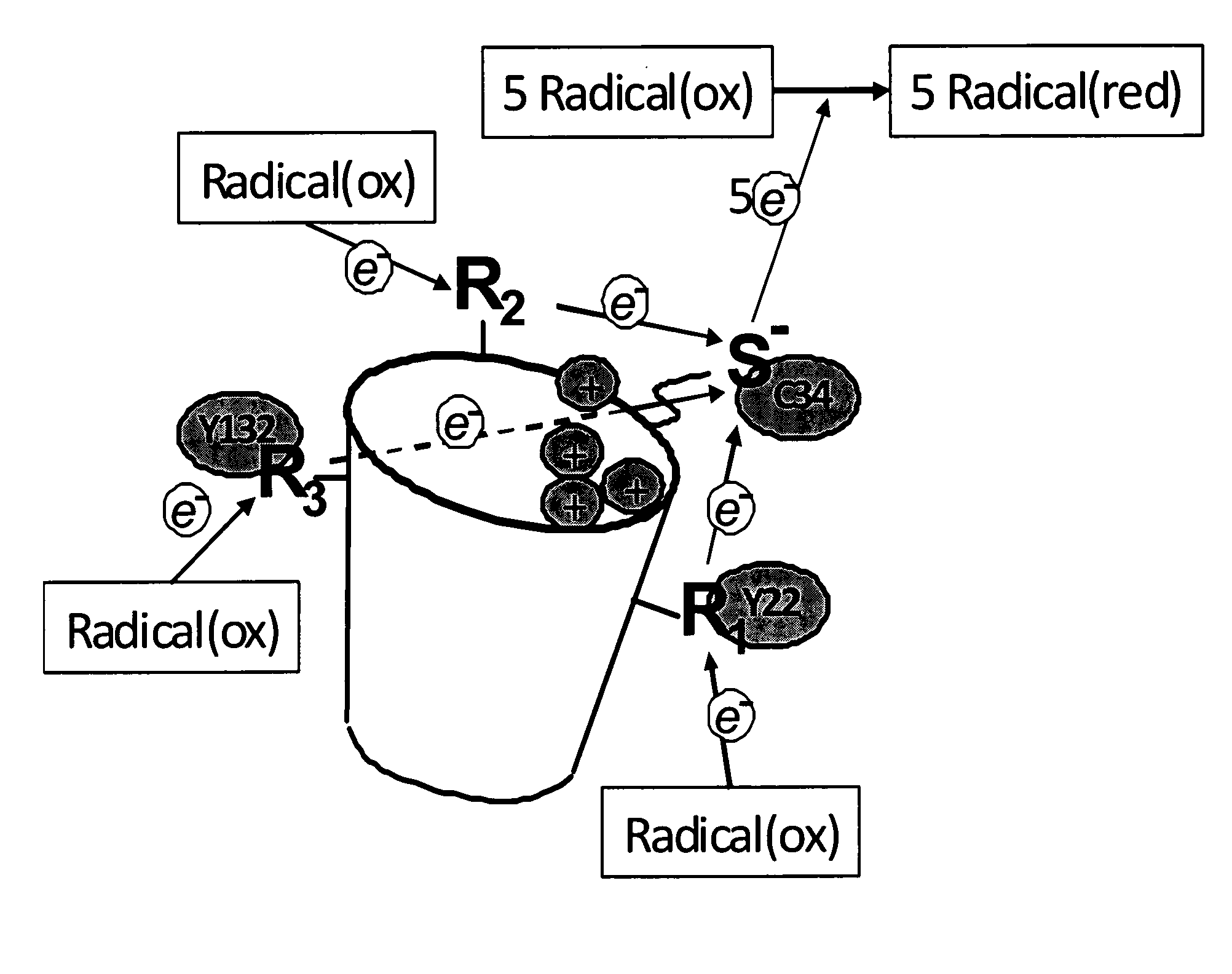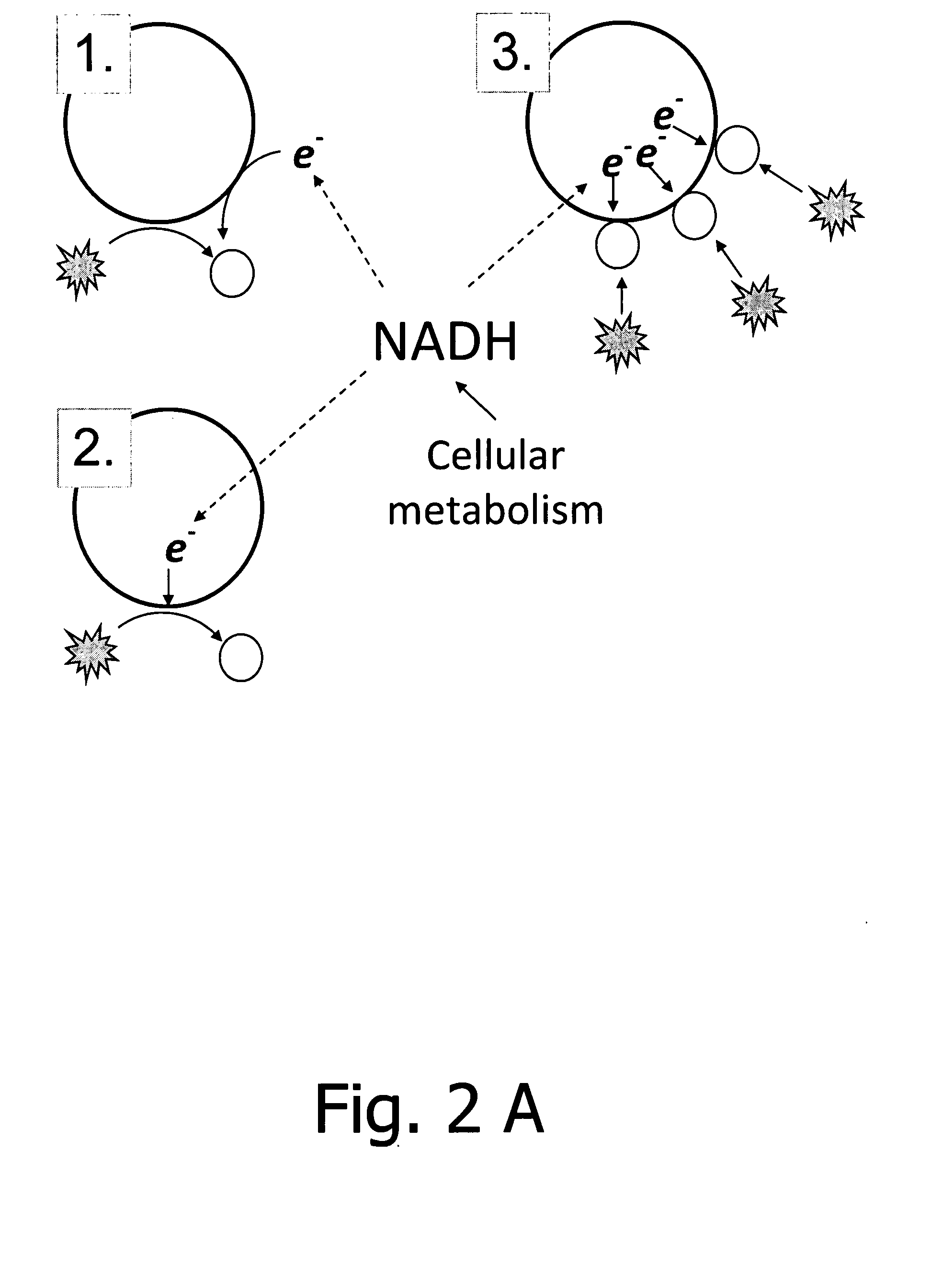Medical use of the radical scavenger and antioxidant alpha-1-microglobulin
a technology of alpha-1 microglobulin and radical scavenger, which is applied in the field of medical use of alpha-1 microglobulin, can solve the problems of tissue damage, unwanted modification of target molecules, and ultimately loss of cellular functions, and upset the redox balan
- Summary
- Abstract
- Description
- Claims
- Application Information
AI Technical Summary
Problems solved by technology
Method used
Image
Examples
example 6
[0209]New results show a correlation between the concentrations of A1M and haemoglobin, and between A1M and protein carbonyl groups, respectively, in the human disease (PE). PE is a disease of pregnancy with the clinical symptoms high blood pressure and proteinuria. It is known that PE is a disease with a certain degree of oxidative stress. Our results show that the concentrations of plasma haemoglobin concentrations and plasma protein carbonyl group, a biomarker of oxidative stress are correlated to the disease (not shown). We also found that the concentrations of A1M in plasma and placenta tissue extracts were significantly elevated in PE-patients and correlated to plasma haemoglobin and protein carbonyl group concentrations (FIGS. 15 and 16A-D). These results indicate that the synthesis of A1M are upregulated in vivo in diseases with oxidative stress and elevated concentrations of haemoglobin.
7. Stimulation of Extracellular Matrix Growth
[0210]As described above A1M has protective...
example 7
[0211]To investigate the potential for use of microglobulins in general and A1M in particular, for the treatment of inflammatory dermatological diseases, a skin penetration experiment was undertaken. The dermatological diseases of interest are inflammatory diseases involving impaired barrier function such as atopic dermatitis and psoriasis. The model used takes into consideration the impaired barrier function and is described in the literature, U. Jacobi and K. Engel, et. al. in “Penetration of Pollen Proteins into the Skin” Skin Pharmacol Physiol 2007; 20:297-, as a relevant model for determination of protein delivery through skin in atopic dermatitis patients.
[0212]A bronaugh cell diffusion unit is used. The equipment consists of 14 cells and each cell has lower part where the receptor medium, 20 mM TRIS, 0.1 N NaCl at pH 8, is pumped through at a rate of 1.4 ml / hour and an upper part where the product, in this case a 3 w / w % solution of A1M, is administered. The upper and lower p...
example 1
Topical Composition
[0218]Compositions comprising the following ingredients will be made
IngredientFunctionConcentration rangeA1MDrug substance10-40% w / wPenetration enhancer(s)0-10%w / wSolubilizer(s)2.5-20%w / wOintment base,30-87.5%w / wSuspension base orEmulsion base
PUM
| Property | Measurement | Unit |
|---|---|---|
| w/w | aaaaa | aaaaa |
| pH | aaaaa | aaaaa |
| constant voltage | aaaaa | aaaaa |
Abstract
Description
Claims
Application Information
 Login to View More
Login to View More - R&D
- Intellectual Property
- Life Sciences
- Materials
- Tech Scout
- Unparalleled Data Quality
- Higher Quality Content
- 60% Fewer Hallucinations
Browse by: Latest US Patents, China's latest patents, Technical Efficacy Thesaurus, Application Domain, Technology Topic, Popular Technical Reports.
© 2025 PatSnap. All rights reserved.Legal|Privacy policy|Modern Slavery Act Transparency Statement|Sitemap|About US| Contact US: help@patsnap.com



